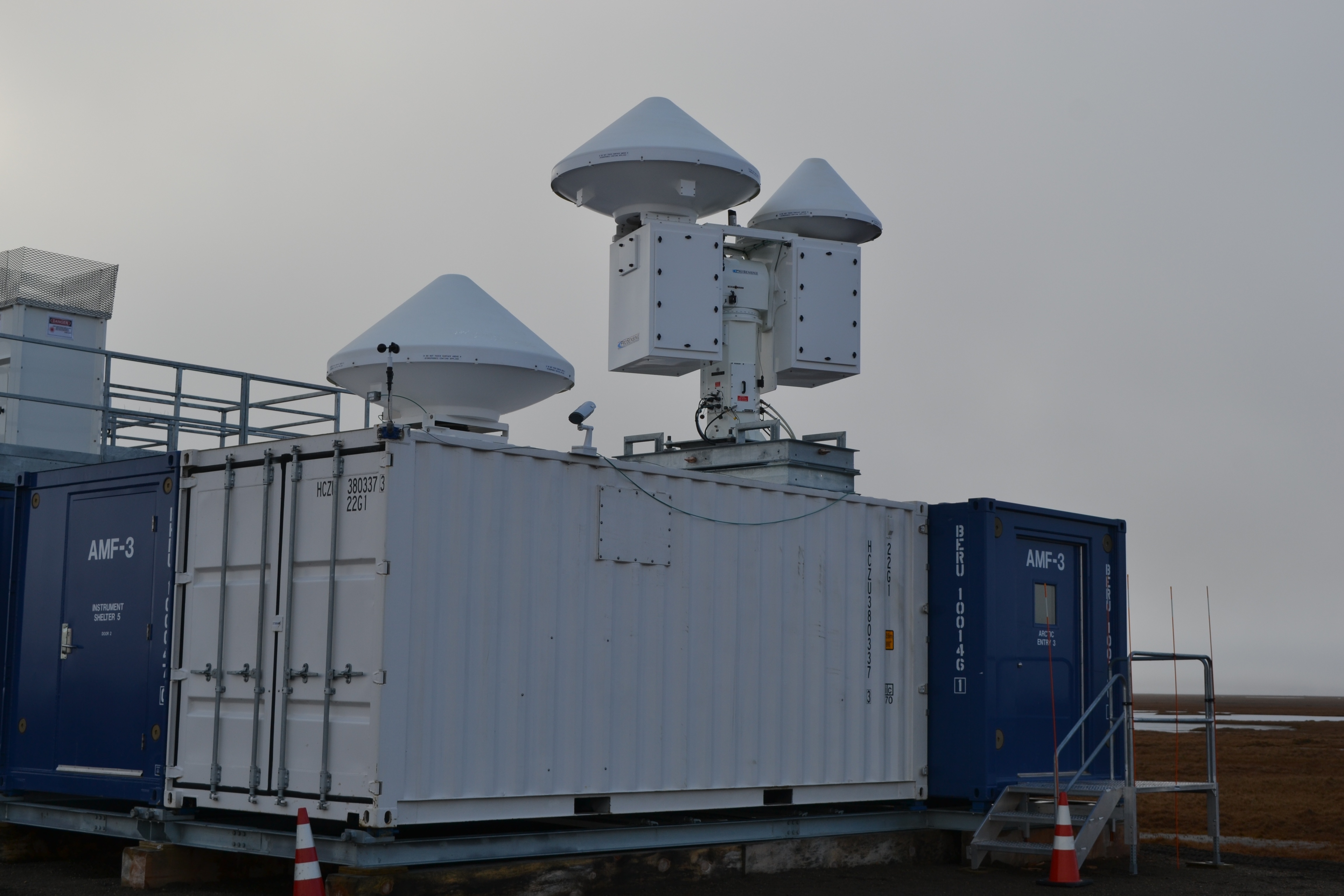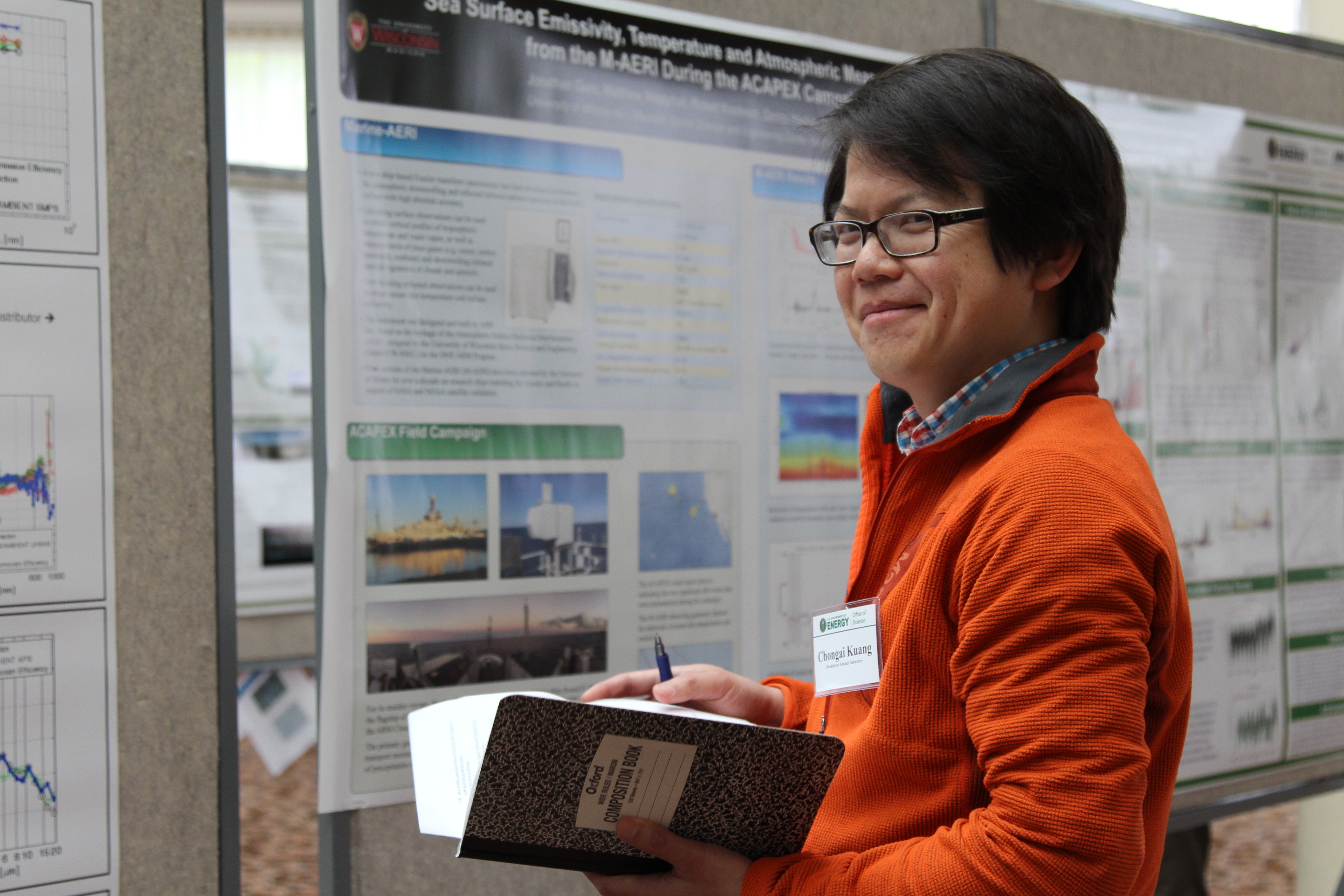Brookhaven Lab to Lead AMF3 Move to Southeastern United States
Published: 18 February 2020
Site science team seeks community feedback on potential locations

The Atmospheric Radiation Measurement (ARM) user facility will soon begin the process of moving the third ARM Mobile Facility (AMF3) from Alaska to the Southeastern United States. The U.S. Department of Energy’s (DOE) Biological and Environmental Research program selected the site science team that will help guide the move.
Brookhaven National Laboratory (BNL) in New York will lead the AMF3 relocation effort. Supported by ARM and DOE’s Atmospheric System Research (ASR) program, the multi-institutional team is responsible for developing a science plan and initial research project for the Southeastern U.S. deployment.
The team proposes to improve process understanding and model representations of aerosol, cloud, and land-atmosphere interactions, together with key cross-coupling of those areas to explore land-atmosphere feedbacks and aerosol-cloud interactions.
“Those three topical areas don’t happen in isolation, and the Southeast U.S. is an area where all three are really tightly coupled,” says BNL aerosol scientist Chongai Kuang, who leads the site science team.
Read the team’s proposal abstract.
Answering the Call

When the call went out for a national laboratory-led site science team, Kuang knew BNL had to respond because, he says, “it was right up our alley.”
Researchers in BNL’s Environmental and Climate Sciences Department study the topical areas that Kuang wanted to target in the proposal. The 10-person site science team includes three topical leads from BNL: Kuang (aerosols), Scott Giangrande (convective clouds), and Shawn Serbin (land-atmosphere interactions).
“We were very excited to be able to bring in expertise from land-atmosphere interactions,” says Kuang. “It was the first time in our department where we were able to leverage that expertise.”
Other members of the site science team are:
- Gregory Elsaesser, Goddard Institute for Space Studies, Columbia University/NASA
- Pierre Gentine, Columbia University
- Thijs Heus, Cleveland State University
- John Peters, Naval Postgraduate School
- Mariko Oue, Stony Brook University in New York
- James Smith, University of California, Irvine
- Allison Steiner, University of Michigan.
With feedback from the scientific community in mind, the group will help pinpoint potential destinations for AMF3 and collaborators in the region. Team members will work closely with ARM leadership and Sandia National Laboratories in New Mexico. Sandia will continue to manage AMF3 after it heads to the Southeast.
An ARM Mobile Facility workshop in August 2018 identified the Southeast as a region of interest for further study. Kuang says the team wants to put AMF3 in an area where the interactions between aerosol, convection, and land-atmosphere processes can be clearly and carefully studied.
“The processes that we’re trying to study there are defined by the unique environment of the region, which is characterized by high humidity, frequent convection, and high biogenic emissions,” he says.
Give Your Feedback
“A goal of this project is to really engage with the broader scientific community and the public.”
Chongai Kuang, AMF3 site science team lead from Brookhaven National Laboratory
By the end of fiscal year 2021, AMF3 is expected to end operations at Oliktok Point, Alaska, where it has collected data since 2013. The Southeastern U.S. deployment will start in fiscal year 2022 and is scheduled to last five years.
“We plan to work with the leadership of ARM, ASR, and other relevant agencies to host focused, strategic community workshops on scientific themes connected to the Southeastern United States,” says Kuang.
The BNL-led site science team expects to present high-level goals, timelines, and potential regions for the deployment, and seek feedback at a breakout session during the June 2020 Joint ARM User Facility/ASR Principal Investigators Meeting. The team also plans to communicate project updates through the ARM and ASR newsletters.
“A goal of this project is to really engage with the broader scientific community and the public,” says Kuang. “Our plan is to identify some regions, but then also engage with and gather feedback from the broader scientific community in order to build wide-ranging interest in the deployment.”
If you have site ideas or are interested in collaborating, contact Kuang.
Keep up with the Atmospheric Observer
Updates on ARM news, events, and opportunities delivered to your inbox
ARM User Profile
ARM welcomes users from all institutions and nations. A free ARM user account is needed to access ARM data.


















